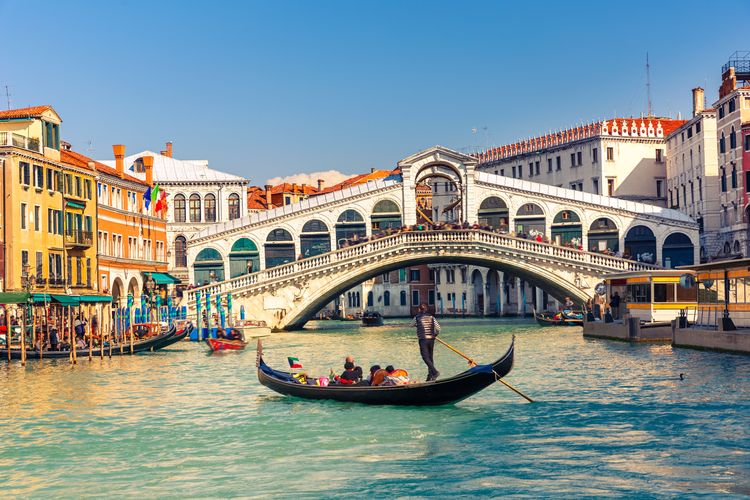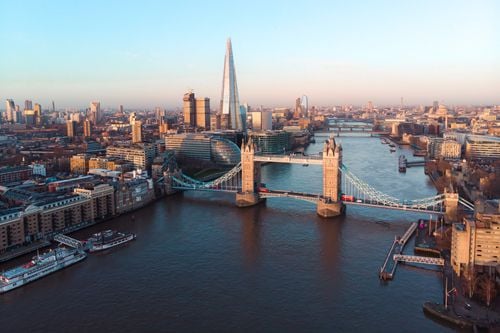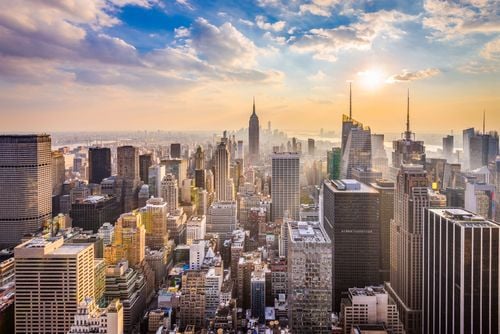Spanning the Grand Canal with a single 7.5 m high arch, the Rialto Bridge remained the only link between the two banks of historic Venice until the 19th century. It was completed in 1591, following the construction of several wooden bridges. From the 13th century onwards, an entire commercial district grew up around the Rialto, the heart of the Serenissima's economic activities.
For centuries, the Rialto Bridge was the only bridge to cross the Grand Canal, linking the sestieri of San Marco on one side and San Polo on the other. The breathtaking heart of the city, the Rialto was for a long time the scene of intense economic and commercial activity, at a time when goods flocked from faraway lands to the quays of the Serenissima.
Even today, the Rialto Bridge provides a link between two of Venice's must-see districts. San Marco has an aristocratic air about it, with its palaces and theatres, and San Polo is busier, with its markets and churches: a walk between the two banks of the Grand Canal is a must.
In this bustling, touristy Venice, don't try to see and visit everything: instead, take the option of wandering along a shady campo, getting lost in the maze of ancient alleyways, cul-de-sacs and little bridges spanning the canals, only to come face to face, a little by chance, with an emblematic monument... that's the magic of Venice!

Rialto Bridge
- © S.Borisov / ShutterstockThe Rialto Bridge and its markets
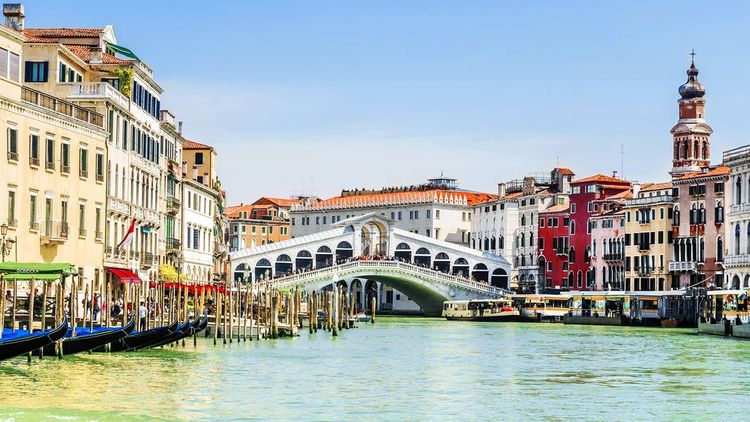
Le Rialto traverse le Grand Canal
- © dimbar76 / ShutterstockThe Rialto Bridge, a superb structure, is now central to the tourist pilgrimage to Piazza San Marco. Too crowded, it is quickly replaced by the Rialto markets (Mercati di Rialto*), the last remaining witnesses to this area's commercial past, on the banks of the Grand Canal.
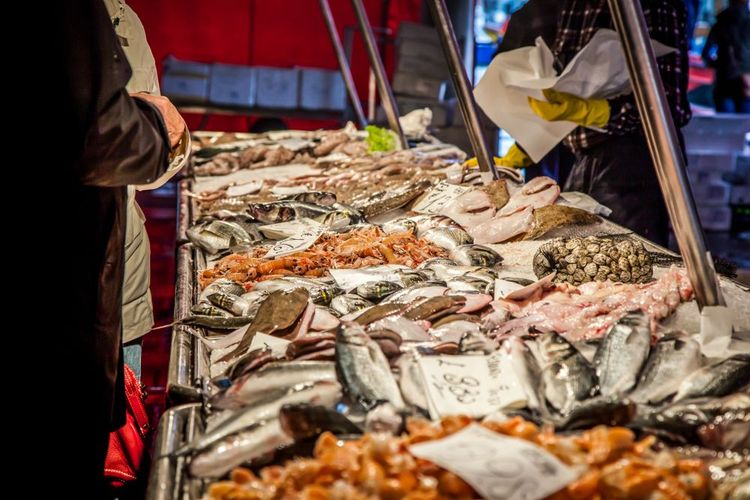
Rialto fish market
- © Ilia Baksheev / ShutterstockEarly in the morning, from 7am, the Rialto markets display their well-stocked stalls on Campo Beccarie and around the arcades of the Fabbriche Nuove: seasonal fruit and vegetables, fresh local produce, perfectly complemented by fish and shellfish freshly arrived on Campo della Pescheria. A real treat if you have cooking facilities in your Venetian pied-à-terre!
Pensione Guerrato
Pensione Guerrato is housed in a renovated 13th-century building.Practical info
Don't wait until Sunday to shop at the Rialto markets, which will be closed! The fish market is held in Campo della Pescheria from Tuesday to Saturday from 7am to 2pm.
The San Marco district, the historic heart of Venice
On the left bank of the Rialto Bridge, you enter the Sestiere San Marco. Let's leave the Piazza San Marco, which deserves our full attention, for once and venture into the old centre of Venice.

Each campo (square) is a landmark and a pleasant place to stop: campo San Luca, campo San Fantin, campo Sant'Anzalo and, of course, the great campo Santo Stefano with its café terraces. The district is home to a profusion of boutiques and big-name shops, restaurants that fill up, and a host of upmarket hotels... Venice's beautiful neighbourhoods, if you will.
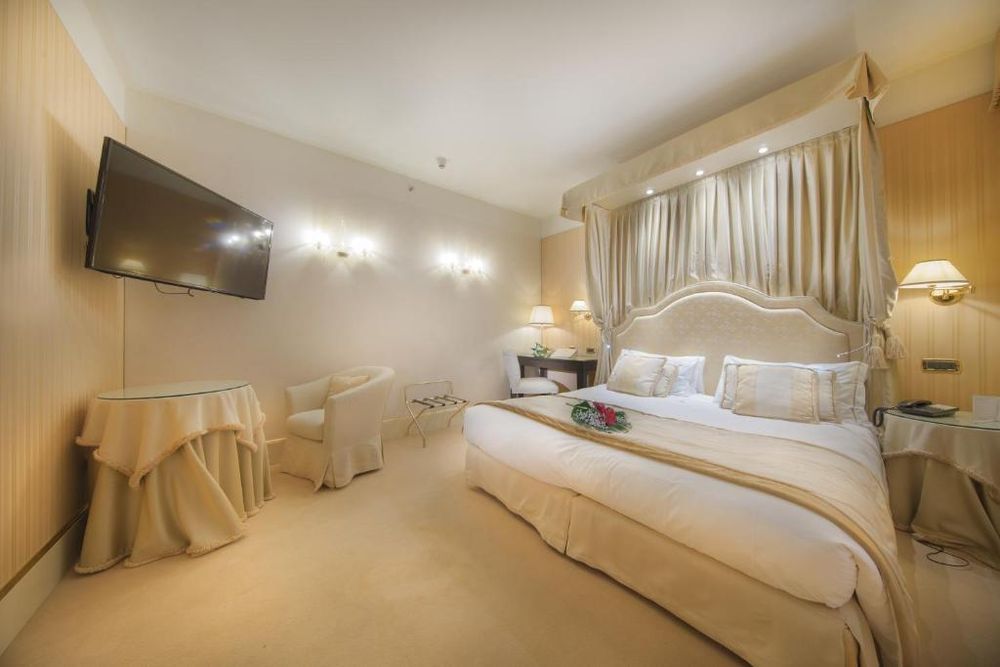 Venice
Venice
Hotel A La Commedia
Hotel A La Commedia is located next to the Grand CanalIn the heart of San Marco stands an institution of Venice's cultural life: its famous opera house, La Fenice. Boasting a splendid auditorium where the great arias of the repertoire are still performed (Rossini, Bellini, Donizetti and Verdi all wrote here), La Fenice (the Phoenix) lives up to its name: it was destroyed and rebuilt twice, in 1836 and more recently in 1996, following tragic fires.
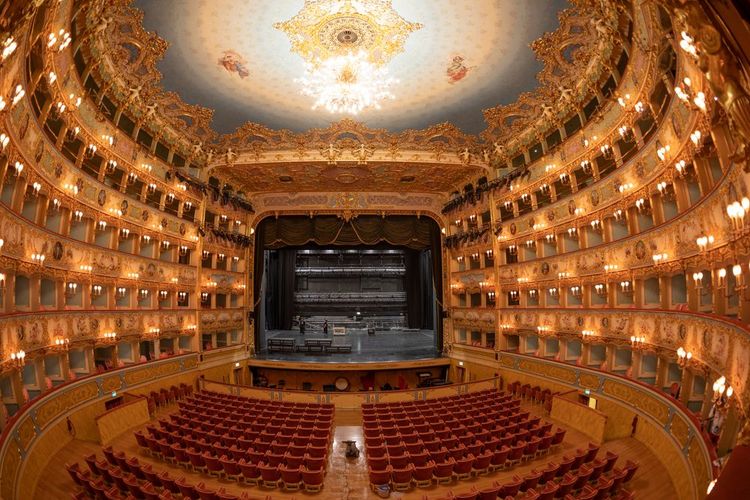
La Fenice, the opera house of Venice
- © travelview / ShutterstockPractical info
If you're planning a trip to Venice, be sure to check the programme on the La Fenice website well in advance to book your tickets: they go fast!
Getting lost in the San Polo district
This time, let's explore the right bank of the Grand Canal, from the Rialto markets. We're in the smallest sestiere in Venice, San Polo. The district has retained its cosmopolitan feel, inherited from the heyday of 15th-century merchant Venice, but today it's the camera-wielding tourists who populate the area around the Rialto.
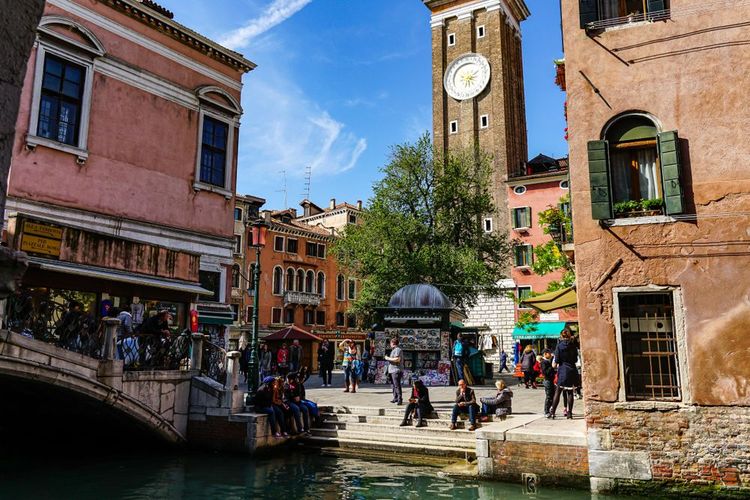
Many of Venice's finest buildings can be found in this area. The area around the Grand Canal, like the campi de San Polo, is full of architectural surprises, such as the admirable palaces of campo San Polo, or the church of Santa Maria Gloriosa dei Frari, on campo dei Frari, the largest in Venice, housing paintings by Bellini and Titian.
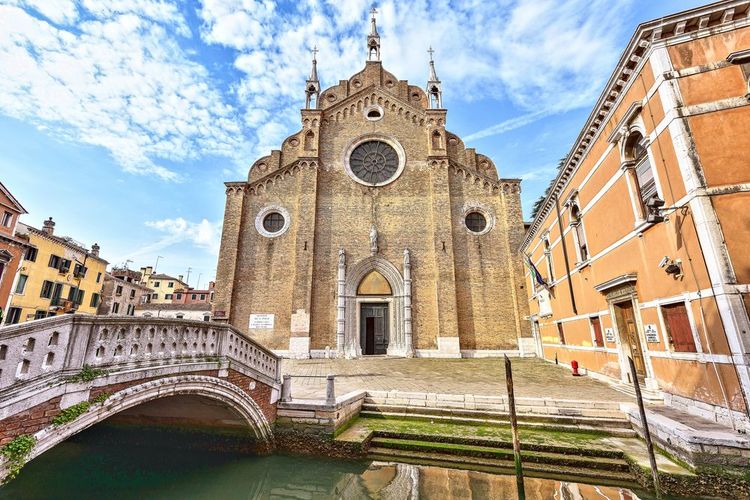
Santa Maria Gloriosa dei Frari
- © CastecoDesign / ShutterstockBut San Polo is best explored on a whim, following a narrow alleyway, crossing a small bridge over a deserted canal, to reach a new campo, a new church, a new palace... Not forgetting, in a more prosaic way, the little souvenir shops, the neighbourhood grocery shops, the ice cream parlours, the local cafés, as well as a few good restaurants where you can sample Venetian specialities...
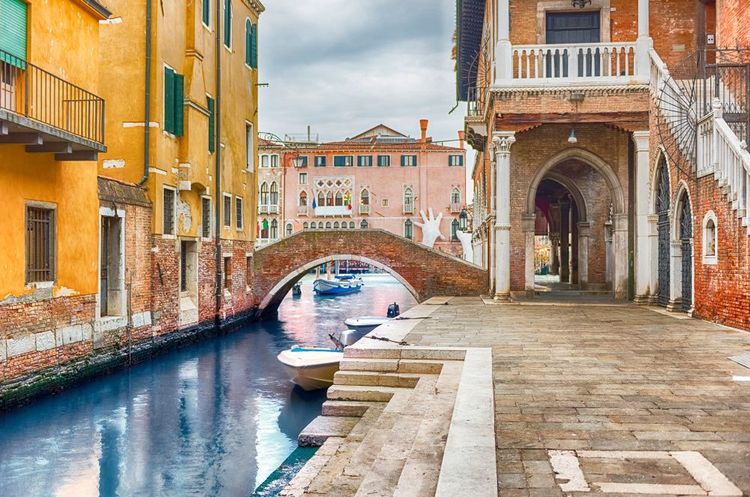
Typical setting in San Polo
- © Marco Rubino / ShutterstockPractical info
In this district, where the fish market is located, take the opportunity to try one of Venice's great specialities: squid ink tagliatelle. A simple and tasty dish when prepared well.
